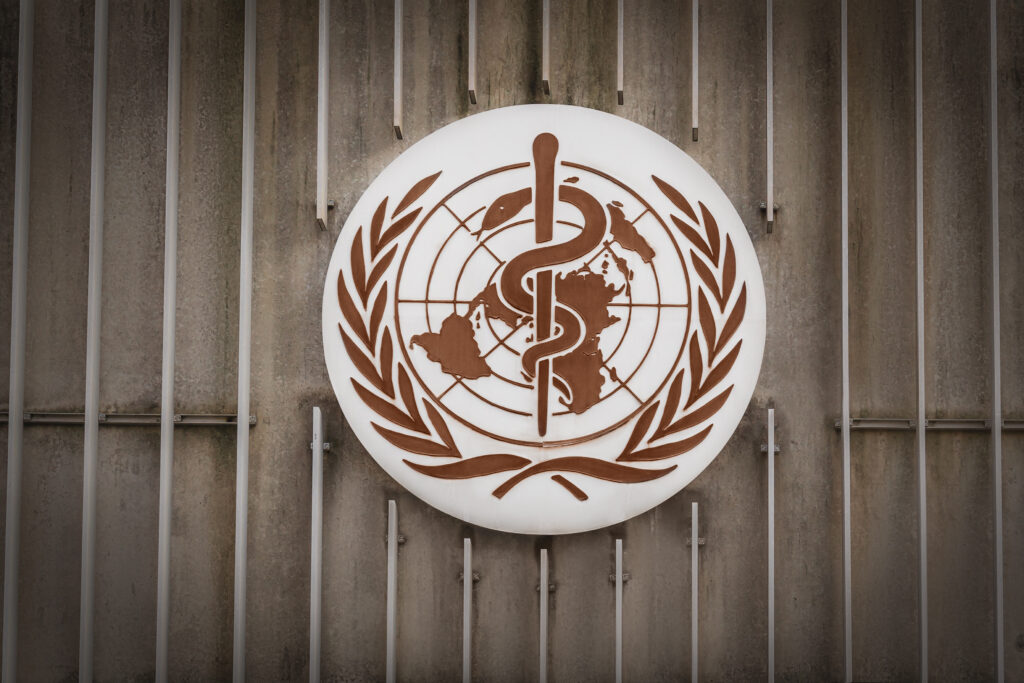Interviews / Human Security
18 June 2025
Multilateralism and Health: What Are the Future Challenges for Global Health?

Following the adoption of the WHO pandemic agreement and in a context of suspended U.S. health funding and reduced development aid, what is the current state of multilateral cooperation in the field of health? What are the key global health challenges today, and how is the WHO positioning itself to address them? To what extent is the WHO currently integrating civil society actors into its governance and intervention mechanisms? An update with Nathalie Ernoult, researcher and co-director of IRIS’s Global Health Observatory, who outlines the main challenges facing the global health sector.
What major decisions were taken at the end of this year’s World Health Assembly? A first global pandemic agreement was reached. What does it contain? How could it reshape the international response to health crises?
This World Health Assembly marked the conclusion of three years of negotiations, which began in the aftermath of the COVID-19 pandemic and culminated in the adoption of the Pandemic Agreement. The goal is to improve collective and equitable preparedness and response to pandemic emergencies. The speed at which the agreement was reached is unprecedented within the World Health Organization (WHO). Despite delicate balances, member states ultimately reached consensus. This seventy-eighth session represents an important episode of international cooperation, as countries managed to agree despite disagreements—particularly on implementation mechanisms for greater equity in access to health products through technology transfers and stock-sharing.
That said, the consensus is not complete. One issue remains unresolved: an annex concerning access to pathogens and benefit-sharing, which must still be negotiated for final adoption at the 2026 World Health Assembly. Nonetheless, many countries are already keen to implement parts of the agreement at the national level.
Several subtopics were addressed, such as technology transfer and access to health products under development. It appears that the countries involved in these three years of negotiations ultimately found a compromise that could satisfy all parties, at least to some extent.
Of course, the agreement is not perfect. Its implementation may also face challenges, as many of the agreed measures are voluntary. And as the COVID-19 experience showed, voluntary measures depend entirely on the goodwill of states or industry.
Additionally, a high-level meeting on non-communicable diseases (NCDs) will take place in New York this year, culminating in a political declaration by heads of state in September. In parallel, a series of discussions took place within the WHO. This moment is significant because it has restored visibility to the issue of NCDs, which remain one of the leading causes of death, and highlighted the need to act not just in high-income countries but globally. These discussions also resulted in the adoption of a text on the subject, contributing to the political declaration.
Parallel discussions on climate change also took place—though in a tense atmosphere. Ultimately, a resolution setting out an action plan was adopted. This sends a positive signal to guide countries towards the implementation of specific actions, particularly to mitigate the effects of climate change on health.
The agreement includes a reform of how these global strategies are financed. What does this shift mean, and what would its long-term implications be in a world facing the climate emergency and the emergence of new health threats? What are the key current issues in global health, and how is the WHO addressing them?
The issue of WHO funding reform was central to the discussions, especially in light of the United States’ withdrawal of funding from the organisation. This has led to a reorganisation of WHO and its departments, with a reduction in the number of technical departments, the merging of others, a freeze on recruitment, and the departure of staff. Furthermore, the proposed WHO budget was revised downwards, with around a 23% cut in funding for the headquarters and approximately 14% for its regional offices. Despite the challenges, the budget was adopted. A more positive development was the approval of another agreement to raise member states’ voluntary contributions to over 20%.
The second financial issue concerns the growing share of funding from certain donor countries, notably China. Beijing stood out by announcing an increase of $500 million in funding for WHO over the coming years. We also saw an increase in contributions, especially from the private sector. So while WHO’s overall budget has been reduced, member state engagement continues. We are witnessing a financial and geopolitical turning point, with countries stepping in and the private sector taking on a more prominent role. It will be important to monitor in the coming weeks and years how these funding sources influence global health decisions.
In the long term, the question arises as to which core functions the WHO should preserve and which might be affected by budget cuts. Many countries have emphasised the importance of safeguarding WHO’s normative role.
NGOs, community organisations, and frontline health workers play an essential role in responding to health emergencies. To what extent is the WHO currently integrating civil society actors into its governance and intervention systems, particularly in low-resource countries?
Within its governance structure, the WHO includes non-governmental organisations in what it refers to as “the constituency,” more commonly known as “non-state actors.” Many civil society groups attend and engage with WHO decision-making processes, particularly at key political moments such as the Executive Board meeting in January and the World Health Assembly.
Civil society organisations are not decision-makers, but they can contribute to discussions—either directly by sharing their positions at meetings or by engaging with country delegations to share experiences and perspectives. In doing so, they can encourage countries to consider certain dimensions when making decisions. Therefore, at the governance level, non-state actors are represented and can influence decisions by sharing recommendations and lived experiences with member states.
While WHO’s main role remains normative, it also plays an operational role in health emergency response. This takes place at country level, alongside the Ministry of Health and the broader network of national organisations. Emergency response involves an entire ecosystem, including community associations, frontline health workers, national ministries, and international organisations. Public-private partnerships, such as Gavi and the Vaccine Alliance, also contribute to emergency response by supplying health products—particularly vaccines. Therefore, emergency response is not the work of one single organisation but of a network of active national players.
What role do you see for non-state actors in the future, given their growing number and the diversification of funding sources?
It is difficult to say, especially in light of the U.S. budget cuts announced earlier this year, which have resulted in the termination of many contracts. These cuts will likely affect community organisations, many of which were sub-recipients of funding mechanisms like the Global Fund to Fight AIDS, Tuberculosis and Malaria—largely supported by the United States. The capacity of some international organisations is also at risk, particularly those that depended on U.S. funding for 25–30% of their budget.
It is therefore unclear whether the role of civil society organisations will expand in the coming years. However, a restructuring of global health architecture and a paradigm shift seem likely. Beyond the U.S. cuts, we are already seeing a general decline in official development assistance from several countries. This broader trend affects civil society organisations and UN agencies alike. Prioritisation is inevitable. In the United States, for instance, some themes have been specifically targeted for funding cuts.
Such moments may lead to reconfiguration. Some countries are already taking back stronger control, while development banks and the private sector are playing a growing role in shaping global health strategies.

